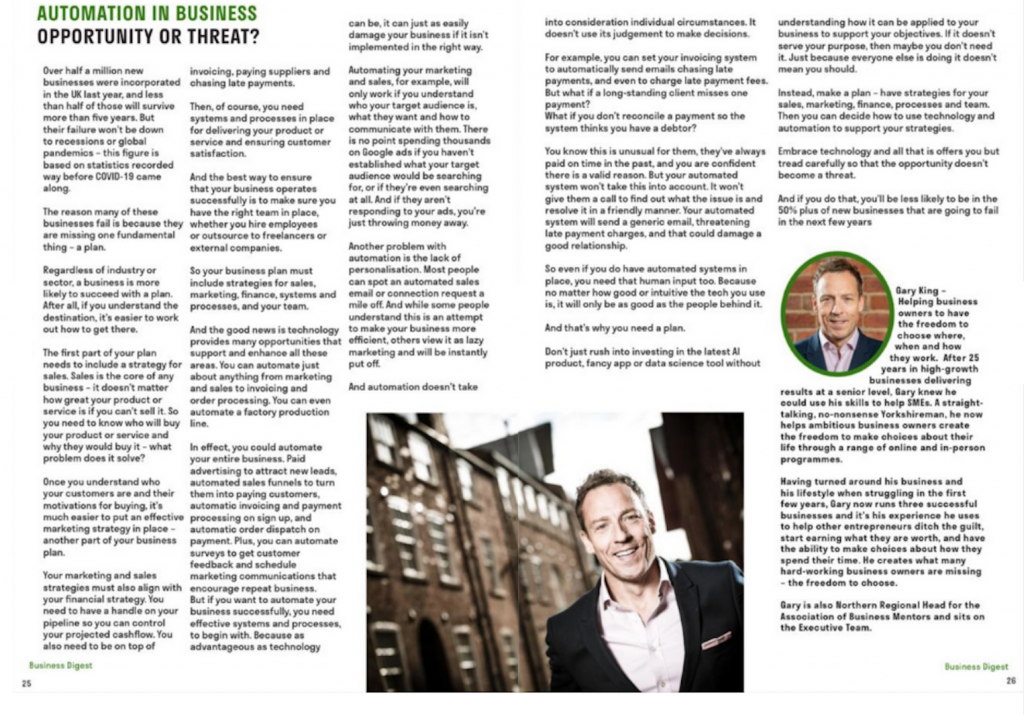Over half a million new businesses were incorporated in the UK last year, and less than half of those will survive more than five years. But their failure won’t be down to recessions or global pandemics – this figure is based on statistics recorded way before COVID-19 came along.
The reason many of these businesses will fail is because they are missing one fundamental thing – a plan.
Regardless of industry or sector, a business is more likely to succeed with a plan. After all, if you understand the destination, it’s easier to work out how to get there.
Have a plan
The first part of your plan needs to include a strategy for sales. Sales is the core of any business – it doesn’t matter how great your product or service is if you can’t sell it. So you need to know who will buy your product or service and why they would buy it – what problem does it solve?
Once you understand who your customers are and their motivations for buying, it’s much easier to put an effective marketing strategy in place – another part of your business plan.
Your marketing and sales strategies must also align with your financial strategy. You need to have a handle on your pipeline so you can control your projected cashflow. You also need to be on top of invoicing, paying suppliers and chasing late payments.
Then of course, you need systems and processes in place for delivering your product or service and ensuring customer satisfaction.
And the best way to ensure that your business operates successfully is to make sure you have the right team in place, whether you hire employees or outsource to freelancers or external companies.
So your business plan must include strategies for sales, marketing, finance, systems and processes, and your team.
And the good news is technology provides many opportunities that support and enhance all these areas. You can automate just about anything from marketing and sales to invoicing and order processing. You can even automate a factory production line.
In effect, you could automate your entire business. Paid advertising to attract new leads, automated sales funnels to turn them into paying customers, automatic invoicing and payment processing on sign up, and automatic order dispatch on payment. Plus, you can automate surveys to get customer feedback and schedule marketing communications that encourage repeat business.
But if you want to automate your business successfully, you need effective systems and processes to begin with. Because as advantageous as technology can be, it can just as easily damage your business if it isn’t implemented in the right way.
Automating your marketing and sales, for example, will only work if you understand who your target audience is, what they want and how to communicate with them. There is no point spending thousands on Google ads if you haven’t established what your target audience would be searching for, or if they’re even searching at all. And if they aren’t responding to your ads, you’re just throwing money away.
Another problem with automation is the lack of personalisation. Most people can spot an automated sales email or connection request a mile off. And while some people understand this is an attempt to make your business more efficient, others view it as lazy marketing and will be instantly put off.
And automation doesn’t take into consideration individual circumstances. It doesn’t use its judgement to make decisions.
For example, you can set your invoicing system to automatically send emails chasing late payments, and even to charge late payment fees. But what if a long-standing client misses one payment? What if you don’t reconcile a payment so the system thinks you have a debtor?
You know this is unusual for them, they’ve always paid on time in the past, and you are confident there is a valid reason. But your automated system won’t take this into account. It won’t give them a call to find out what the issue is and resolve it in a friendly manner. Your automated system will send a generic email, threatening late payment charges, and that could damage a good relationship.
So even if you do have automated systems in place, you need that human input too. Because no matter how good or intuitive the tech you use is, it will only be as good as the people behind it.
And that’s why you need a plan
Don’t just rush into investing in the latest AI product, fancy app or data science tool without understanding how it can be applied to your business to support your objectives. If it doesn’t serve your purpose, then maybe you don’t need it. Just because everyone else is doing it doesn’t mean you should.
Instead, make a plan – have strategies for your sales, marketing, finance, processes and team. Then you can decide how to use technology and automation to support your strategies.
Embrace technology and all that is offers you but tread carefully so that the opportunity doesn’t become a threat.
And if you do that, you’ll be less likely to be in the 50% plus of new businesses that are going to fail in the next few years.

This blog was written for the October 2020 issue of Business Digest. Read it here: https://buff.ly/2HRAIEf
If you want to get the balance right between your automation and your customer success, you need your systems, sales and marketing strategies to be aligned.
To do this, you have to manage your company strategically and know what to focus on or measure daily, to have complete clarity and control. If you would like to manage your business on a single page, access our tool here to get started: www.tendo-uk.com/plan


